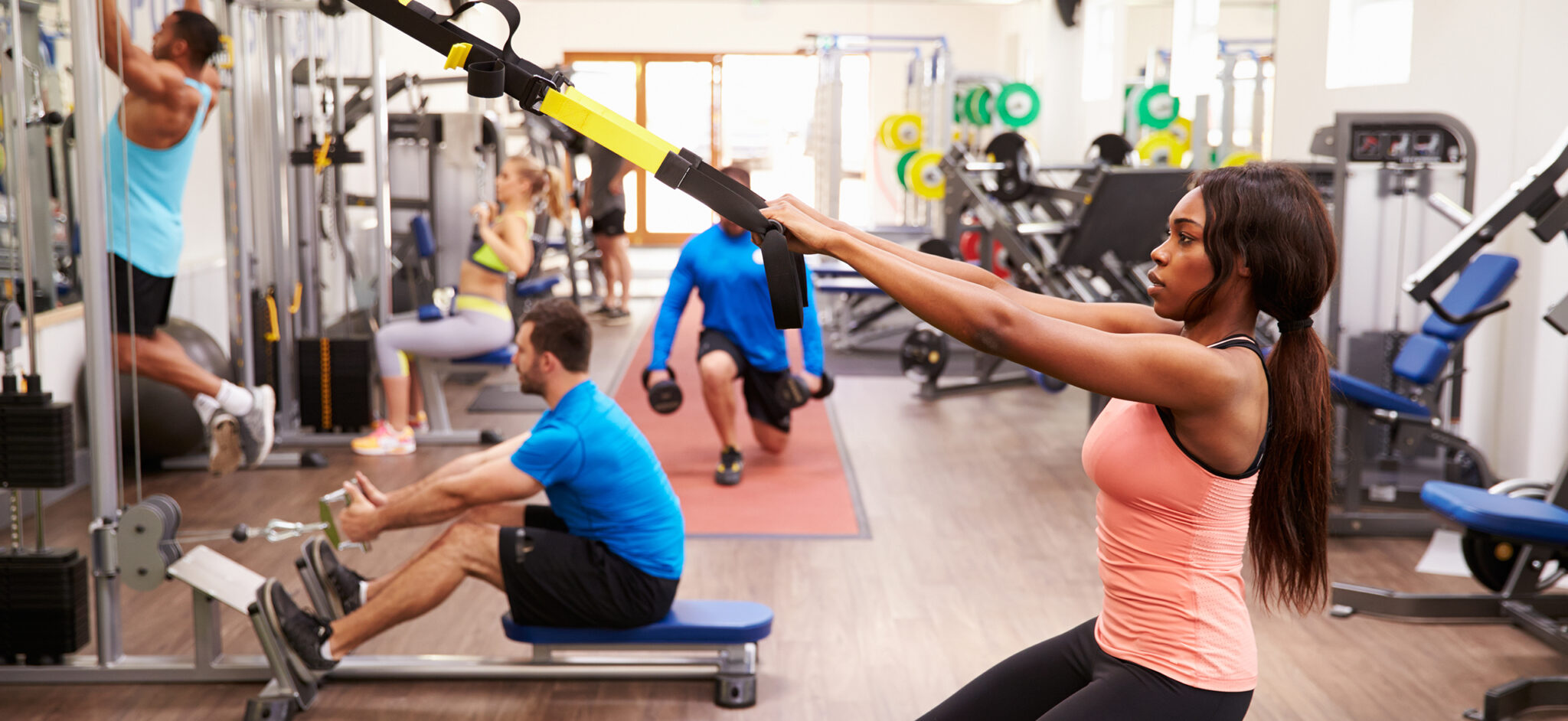There are many types of people at the gym to attract, engage, and retain. Read on to find out more about each type of gymgoer and how to identify your ideal target audience.
In the UK, there are 7.3 million members of privately-owned gyms and fitness clubs in 2024. That means 10.9% of the population is a gym member.
And with that comes a lot of different types of gymgoer. One benefit of owning a gym is getting to meet and interact with so many different people on a daily basis.
It does present a challenge though. How do you attract, engage, and retain a diverse group of members?
We’re here to help with a comprehensive look at the types of people at the gym you’ll encounter. And tips for winning and retaining them as members.
Let’s get stuck in!
Power up your business & stay in the know
Finding your target audience
Before getting stuck into exploring the different types of gymgoer you’ll need to deal with when working in a gym business, let’s take a quick step back.
Many of the most successful businesses know that they’re not for everyone. Instead they have a clearly defined target audience (or set of target audiences) that they’re trying to appeal to.
“We are a little bit marmite for some people, you either love Gymbox, or you hate Gymbox. And that’s ok because we don’t want to attract everybody.
The reality is some people will find what we do, and coming into the gym with a boxing ring in the middle, quite intimidating.”
Rory McEntee, Brand & Marketing Director for Gymbox at PerformX Live 2024
A target audience is a group of people characterised by specific demographics and behaviours. Your target audience will influence decisions you make for your business.
Knowing your target audience will help you:
- Offer the right equipment, classes, and services
- Focus on the segments that will generate the most revenue
- Market your gym effectively
Creating personas
Start by creating a persona or set of personas for your target audience. A persona is an overview of your ideal member based on common demographic and behavioural data. For example:
- Age
- Gender
- Employment
- Income
- Family status
- Interests
- Personality traits
- Health & fitness goals & motivations
- Challenges
Aim to have 2-4 member personas based on your target audience covering the different types of people that might go to your gym.
Even if your business is established, it’s well worth investing the time to create personas. And in fact it’s even easier at this stage. You’ll be able to use the data in your gym management software, and elsewhere, to review your existing membership base.
Attracting your target audience
Armed with your member personas, you’ll be better positioned to attract and retain the ideal types of gymgoer for your club.
Make sure your offering and member experience lives up to the expectations of your target audience. Plus, take the right approach to marketing your club.
Start by understanding where your audience is active. Where do they hang out online and offline too? How do they want to interact with businesses like yours? This will let you reach them in the right places in the right way.
Then it’s time to create relevant content. Your content is the message you want to send to your target audience. Show you understand their needs and desires – and that you can help.
The type of content you create will depend on where your audience is active. Possibilities include a fitness blog post, fitness email newsletter, gym social media post, a print ad, a social media ad, etc.
“When it comes down to it you’re motivated by two things and two things only. The ability to move away from pain or the need to move towards pleasure. That’s it.”
Adrian Marks, enjoy! at the Xplor Xperience May 2024
Next you need to get your content out there in the right places. That could be:
- Targeted ads on social media
- On social media using location tagging and hashtags
- In local newspapers and publications
- Via partners and influencers
- Gym member referral programmes
- And more!
23 types of people at the gym
Regardless of your target audience, there are common types of people at the gym that you’ll encounter. The better you understand them, the better you can engage and retain them.
So, here are the most common types of gymgoers you need to think about. Plus, tips for success with each group:
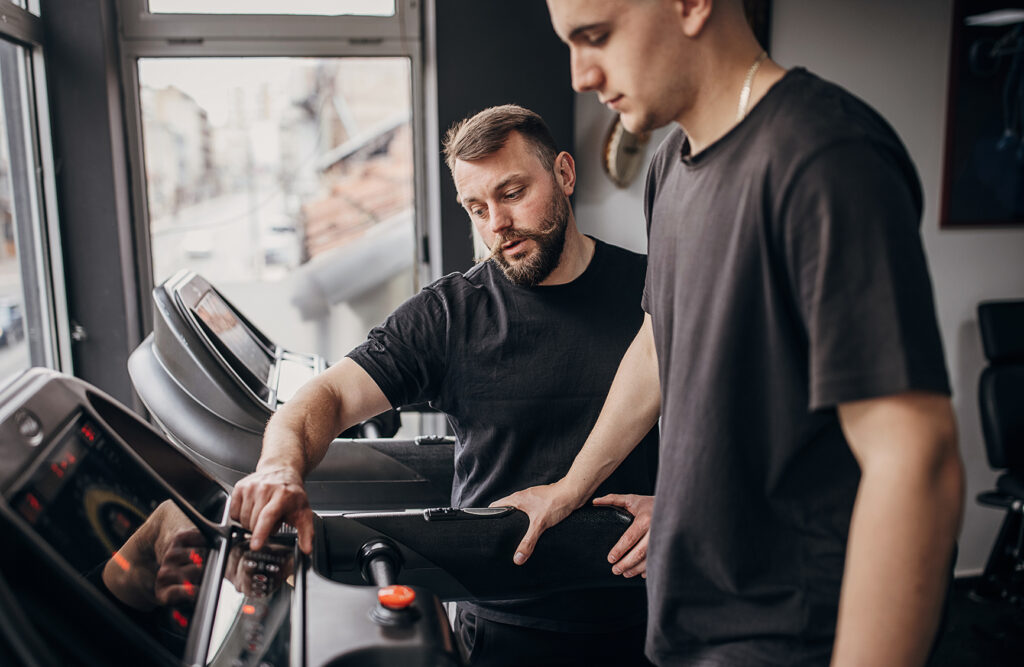
1. The first timers
These are your brand new members with no experience of working out in the gym.
They’ve just taken a massive first step and joined your club. They may be nervous and unsure what to do. They may be intimidated. And many won’t feel confident asking for help.
There’s a risk that you’ll see them once or twice then never again.
Success tips:
- Offer them an induction or welcome session covering their goals and prior experience, key need to knows about your club, and how to use essential pieces of gym equipment. You could even offer a training programme to help them figure out what to do during their visits. Research shows that members who have an induction keep using their membership for 4 months more than those who don’t.
- Make sure that an induction is part of a longer gym member onboarding process. One that’s created dynamically for each new member sending the right communication at the right time. Focus on encouraging the new member to make that next visit.
- Gymgoers who regularly attend group fitness classes are more likely to be loyal members than those who don’t. So, encourage brand new gymgoers to try out your classes. It’ll help them build confidence and meet other members too!
- Group fitness is not for everyone. Some brand new gymgoers would prefer a more 1-2-1 approach. Consider incorporating some PT sessions into your onboarding process for new members. Or promote PT bundles to new members. That way they’ll feel up-to-speed and confident working out faster. It can also help them learn proper form and technique to avoid injury.
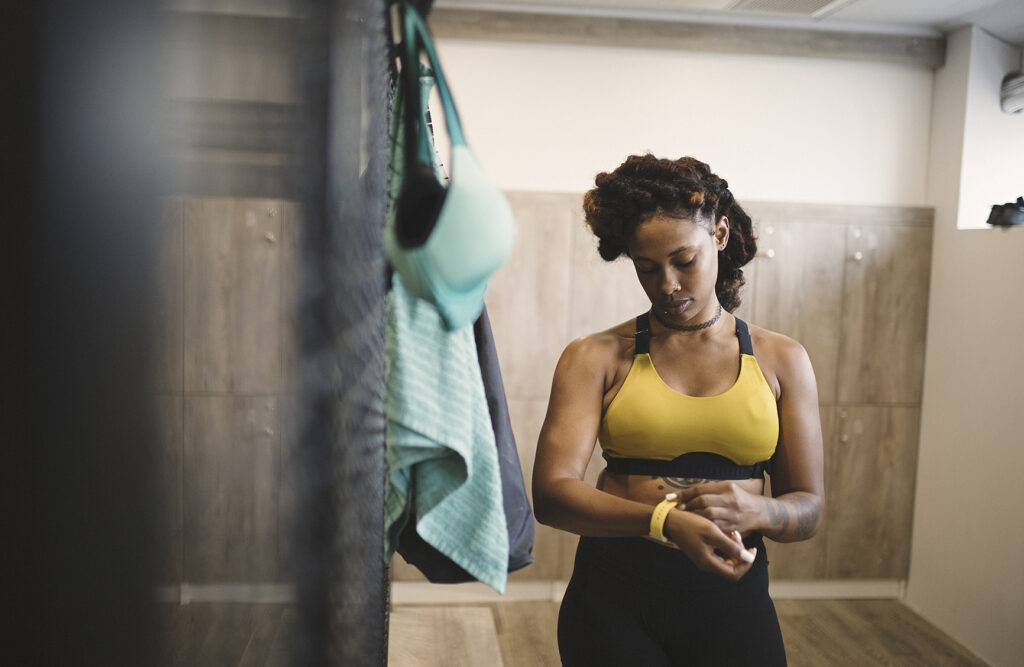
2. The returners
You know the ones! They join each January full of motivation to build healthy habits for the year ahead. Come February they’re long gone having lost motivation to prioritise working out at your club.
Success tips:
- Make sure they’re engaged during the onboarding process. Even though these members are returning, the right approach to welcoming them back is essential. They’ve already left you before after all. Aim to get them to have an induction of some kind – rename it if you need to – and use that session to workout how you can motivate them to keep at it. This should also be part of a personalised onboarding journey with plenty of digital and in-person touch points.
- Create a positive, welcoming environment. Find ways to get the returners integrated into your gym community fast. That could be through special fitness events, gym challenges, or even regular small group training sessions for members with common goals. Feeling part of something bigger will leave these returners less likely to leave again.
- Encourage the returners to workout with someone else. Offer guest passes and promote your refer-a-friend programme as a part of your onboarding journey. Having an accountability partner may help the returner to keep visiting regularly.

3. The regulars
The lifeblood of your business. Your regulars are the ones you see week in week out. They’re in the habit of showing up and working out. You still need to make some effort though…
Success tips:
- Ask for feedback regularly. Your regulars often see more than any other type of people at your gym. And they won’t all feel comfortable providing feedback directly. To complement in-person feedback requests, use digital surveys with the option of staying anonymous, to find out how you are doing. Be open in addressing issues highlighted and the actions you’re taking.
- Celebrate them in public and private ways. Run features like ‘member of the month’ in your newsletter, on your blog, and on your social media channels. Create loyalty programmes where regulars are rewarded for sticking with you and showing up.
- Sending messages at key times, like their birthday, Christmas, and their joining anniversary, can be a fantastic way of showing you care. Use email, text messages, or even old-fashioned post!

4. The competitive ones
We’ve all come across these ones! Your competitive members are the ones who are always up for a challenge and are driven by winning. Even a simple workout in your gym may see the competitive ones trying to one-up other members by going faster and heavier at every opportunity.
Success tips:
- Run gym challenges as often as possible. To keep the competitive ones on their toes, consider adding different levels to your challenges. Think beginner, intermediate, and difficult. That way they can compete to the level they want.
- Create groups for members who’d like to take part in fitness competitions like IRONMAN and HYROX. Your competitive members will enjoy the camaraderie and friendly competition of training with like-minded members towards common goals.

5. The reluctant ones
They’re there but they really don’t want to be. Perhaps they have a goal the need to meet and feel obliged to show up. Often the reluctant ones workout with minimal effort. And you may find them procrastinating looking at their phones.
Success tips:
- As covered with other types of gymgoers, make sure that your onboarding process is tailored to the needs and habits of each member. During onboarding aim to help every member focus on setting goals that matter to the reluctant ones personally. They may have come in looking to lose weight. Yet really they’d benefit from having a more meaningful goal like being able to play football with their kids.
- Regularly offer members personalised fitness assessments and training plans. This way you can help them reset their goals, get more from their workouts, and find joy in the process.
- The reluctant ones may also benefit from attending group classes or even group training sessions. This’ll help them stay on track and meet new people in the process.
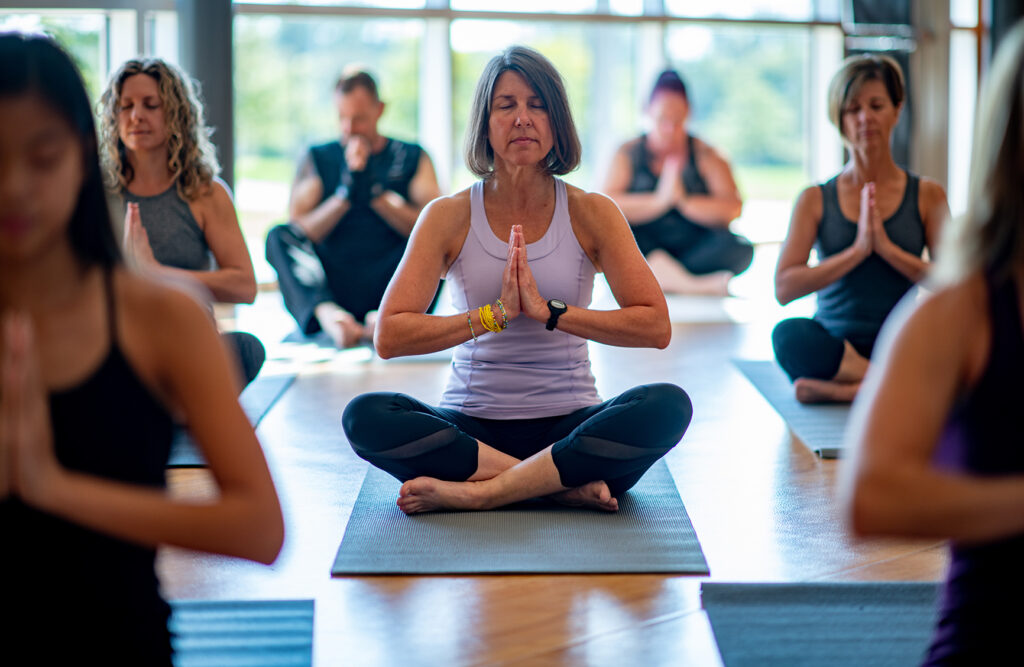
6. The stress relievers
Recent research from ukactive found that improving mental health and wellbeing is a top motivator for many gymgoers. 79% of current members stated this was a top reason for joining a gym. So, it’s no surprise that clubs are filled with stress relievers.
The gym is a chance for this type of gymgoer to escape the day-to-day world and invest some time in themselves. It’s a chance to release happy endorphins and get moving.
Success tips:
- Market your club as a place to relax and recharge. Highlight the positive impact that working out and making healthy choices can have on anxiety and overall mental health.
- Create personal training packages and offer training plans to help keep the stress relievers focused on their workout. Likewise, group fitness classes can also be a great way to destress. Challenging participants to focus on following along with your instructor’s directions.
- Sell a selection of gym accessories for anyone who has forgotten something they need for their workout. Think water bottles, socks, and t-shirts.

7. The health seekers
Similarly, ukactive found that 82% of gym members want to improve or maintain their physical strength and fitness. And 67% want to sleep better. So, the health seekers are another type of person at the gym to be aware of.
This group know the positive impact that being active will have on other areas of their health. They may be looking to improve current health conditions. And even to make sure they’re actively aging to maintain the best possible quality of life as long as possible.
Success tips:
- Offer health assessments for members. Use body scanners and other technology to make personalised recommendations. Sell these as a one-off or regular bolt-on.
- Run health-focused fitness events. Bring in experts in things like nutrition and wellbeing to run workshops and seminars. As well as delivering valuable education to health seekers, these events help position your business as a health solution.
- Hire or rent out space to nutritionists, sports therapists, and other health professionals. This can also help expand what you can offer to health seekers. So, they can come to you for more than just a good workout.
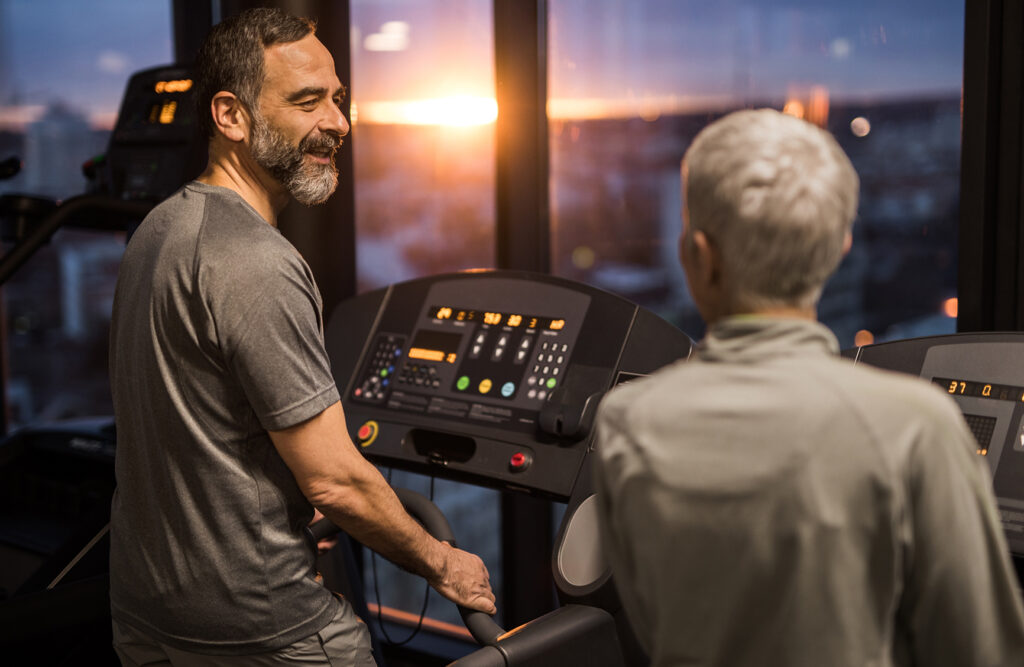
8. The early birds
This type of gymgoer likes to get their visit in early. They’re in and done before many of your members have even woken up. Enjoying the feeling of accomplishment that working out at sun rise (or before it) brings, they often enjoy a quieter gym.
Success tips:
- Review your opening hours. If you open up at 6am to a queue of eager early birds then you may want to consider adjusting your opening hours. Switching to software that supports unmanned access is an option if you want to open without the need to have staff in so early in the morning.
- Run early morning group training sessions. Group training and classes can help build member loyalty. Look at your schedule and see if you could run some sessions for the early birds.

9. The night owls
At the other end of the day you have the night owls. The night owls like to skip the crowds that gyms often experience in the early evening.
Often they’re busy people who aren’t able to visit at other times. Or shift workers working out around work commitments.
Success tips:
- Go 24/7. Many night owls favour clubs that are open 24/7 so they can workout as late as they want. So, with big box low cost chains opening up across the country, going 24/7 can help you stand out to win and retain the night owls. With a 24/7 access control system and a few adjustments, you’ll be able to offer this benefit without having a full team work overnight.
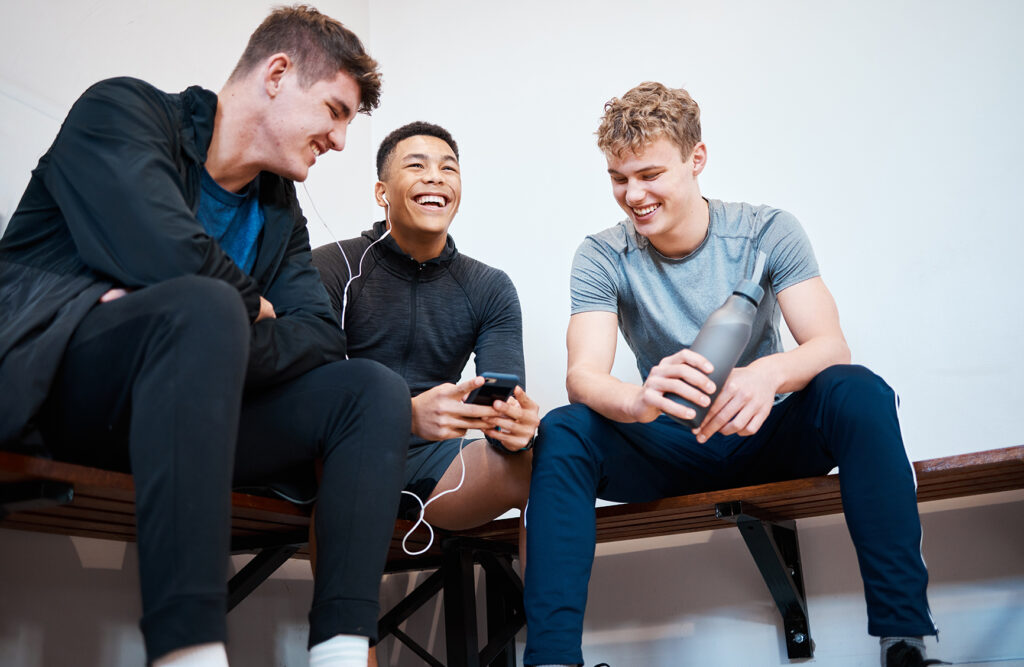
10. The mates
Ever feel like some of your members are always together? Meet the mates! The mates are a group package. They show up and go as a group. And you’ll rarely see them working out alone.
The mates cheer one another on and challenge each other too. Sometimes the mates can be intimidating to other gymgoers.
Success tips:
- Set up a gym member referral programme to encourage the mates to sign up to your club. Reward these members who bring in more new members.
- Offer the option to have group training sessions. That way the mates can workout together while benefiting from the expertise of your gym staff.
- Think about the layout of the gym floor. Making sure equipment is not to close together. This can make it easier for others to get to machines if the mates are gathered together in an area.

11. The couples
Couples who work out together stay together! That’s the mantra of the couples. These two always workout together and motivate one another on.
Success tips:
- Review your membership packages. Look to offer a couples membership package to attract new couples to your club. This can be a cost effective way to acquire new members.
- Look at the classes you run. Consider adding in formats that let people pair up. For example, kickboxing.

12. The families
The families may not always workout together. Perhaps you see both parents coming in but never together as they need to look after the kids. Or maybe you run kids activities or junior gym hours to accommodate the younger ones.
Success tips:
- Introduce family friendly workout hours. This way families with older kids will be able to visit at the same time. And it helps keep other hours for adults.
- Offer kids classes and activities. For example, Zumba Kids or Little Kickers are designed for children. You could also run activity camps during the school holidays.
- Make sure you have family membership packages available. Your gym management software should make these easy for you to set up and sell.

13. The ones with a little life experience
Older gymgoers are often most focused on staying mobile, keeping healthy, and staying independent as they age. Some will have been working out for decades. And others will be coming in for the first time realising they need to be more active.
Success tips:
- Offer discounted senior memberships. Typically these are for people aged 60 plus. You could make members aged 60 plus eligible after a certain time. For example, once they’ve been a member for 1 year they become eligible for discounted membership.
- Review your class timetable to make sure you have the right options for older gymgoers. For example, functional fitness classes that will help these types of people at the gym stay mobile for longer. You could also run classes and sessions for over 50s or 60s.
- Target older gymgoers with tailored email and SMS communications. Use your gym CRM to segment and send these.
- Run regular socials for your members. Help the older members in your community connect and socialise. Think coffee mornings or pub lunches.

14. The talkers
For these gymgoers, a visit to your club is an opportunity to socialise. They spend more time talking to other members than working out. They know every other member and are always keen to chat with the first timers.
Success tips:
- Add social spaces to your club where the talkers can go to socialise with other members. That could be some simple comfy seating in a reception area. Or a café or juice bar where you can earn additional revenue from sales too.
- Run events that members can attend. Make these opportunities to socialise. For example, a group hike into the countryside or a group mixer at a local restaurant.
- Promote group fitness classes and training sessions to the talkers as a social way to work out. These can help members open up and connect with each other by training together.
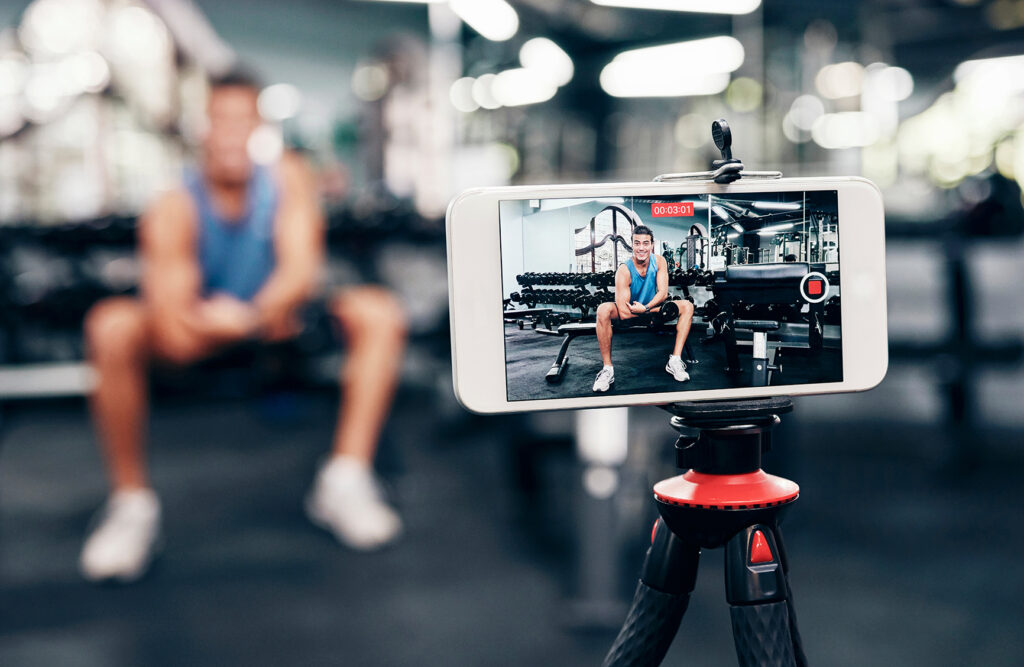
15. The aspiring influencers
You see this type of person at the gym more and more. Often to the dismay of other gymgoers, this type of gymgoer likes to document their fitness journey to share with their social following.
Gym selfies. Workout clips. Challenge videos. The aspiring (and actual) influencers want to capture it all.
Success tips:
- Lean into it and create selfie friendly spots in your gym. This will encourage the aspiring influencers to focus their photos and videos towards specific parts of your club.
- Make it easy to tag your club and that way you can track to see who is posting. Speak to those who are and use it as an opportunity to fuel your own gym social media posts with user generated content (UGC). UGC can boost your business too by encouraging others to give you a try.
- Set clear rules and etiquette for the aspiring influencers to follow. These can help make sure that all members feel comfortable in your club. A lot of people don’t want to be caught in the background of photos and videos when they’re trying to workout.
- If you have influencers and others who are earning money from posting in your club you could even consider charging for shooting content.
“We’re very fortunate that we’ve built a facility that many fitness professionals and influencers trust. 20% of my paying members are fitness professionals… it’s been incredible for marketing… the other thing they do is film. They film ads, they film for themselves – we charge them for it… We’ve built an incredible revenue stream for filming.”
Evgenia Koroleva Founder and Director at ONE LDN at PerformX Live 2024
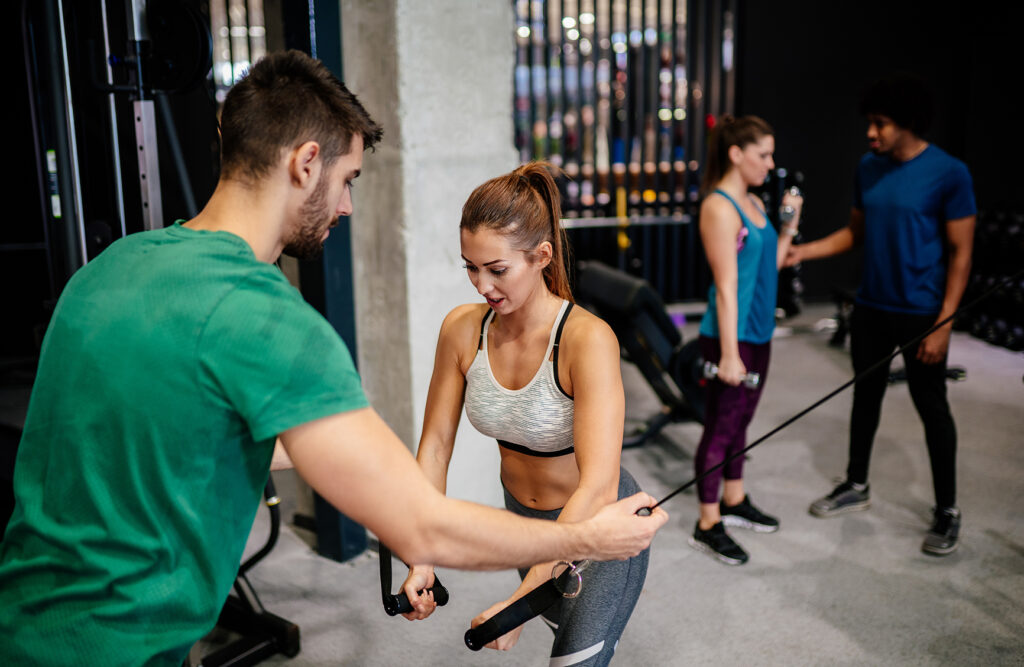
16. The ‘experts’
Also known as the ‘know-it-all’s’! These gymgoers are always keen to help others. Sometimes their help is wanted and actually helpful. Other times it’s not so wanted and not so helpful.
Success tips:
- Make sure your trainers are active on the gym floor helping members. So, you are the ones giving advice wherever possible.
- Proactively offer the ‘experts’ advice where you can and promote PT sessions. If you can help them expand their fitness knowledge everyone will benefit!

17. The tech fans
The tech fans want to get the most out of their workouts using the latest tech. From workout apps to health trackers, these gymgoers are always up for trying the latest tech.
Success tips:
- Explore the latest tech options available to create a personalised member experience. Your gym management software should make it easy to integrate with the tech. Tech used across your club for an exceptional gym member experience.
- Look at strategically upgrading certain gym equipment. Choose pieces that make use of newer and emerging technologies. Focus on items that the tech fans will get the most from.
- Make it easy for the tech fans to use their gadgets. Make sure your member WIFI is fast. And think about where you could add tech charging points to your club.
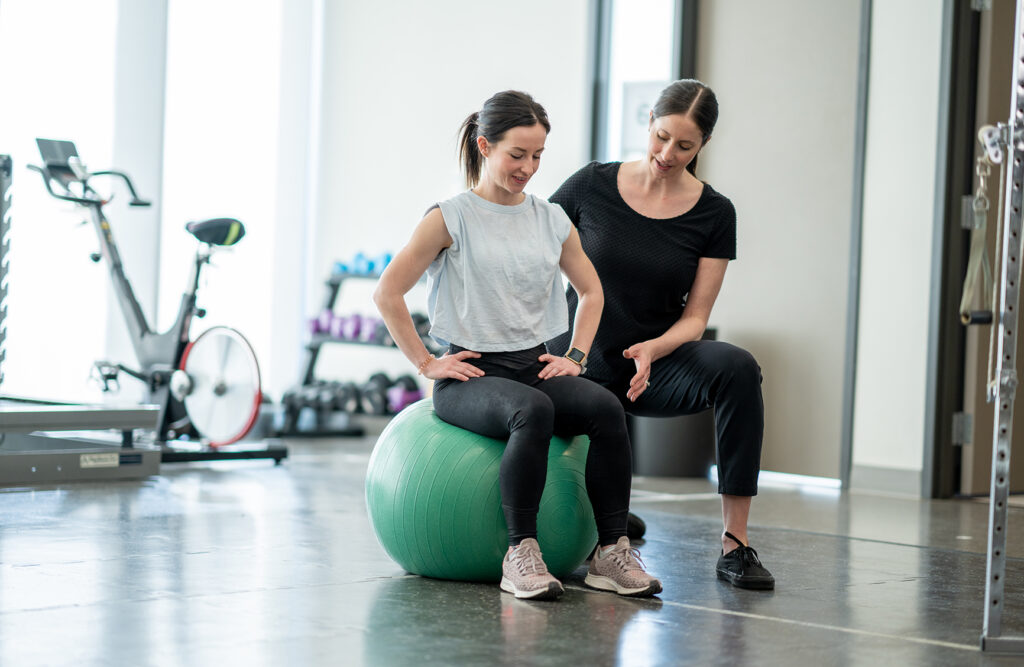
18. The patients
These are those gymgoers who know that exercise can be medicine. They’re recovering from injury or exercising to manage longer-term conditions. And follow a specific routine of targeted moves.
Success tips:
- Make sure you’ve got the right equipment available. Think bands, balance boards and balls, foam rollers, and mats.
- Recommend PTs who have appropriate skillsets. This could be done during the onboarding process. It’s also a good idea to make sure you promote and have easily accessible profiles of your PTs. Highlight specialisms and interests.
- Work with physios and other therapists to expand the services you can offer to the patients. That way you position your club as a place members can go for more of their health needs.

19. The athletes
Whether they’re professionals or amateurs, the athletes know what they’re doing. They often have a specific race or event they’re training for. And a very specific training programme to follow.
Success tips:
- Offering high quality facilities, equipment, and member experience are a must if you want to win and retain the athletes. Invest in the best where you can.
- For the weekend athletes, consider offering training programmes tailored to specific goals. For example marathon, triathlon, IRONMAN or HYROX training. That way you can support them on their journey and help them connect to other members with shared goals. This creates a sense of camaraderie and community that will keep them focused, motivated, and loyal to your club.
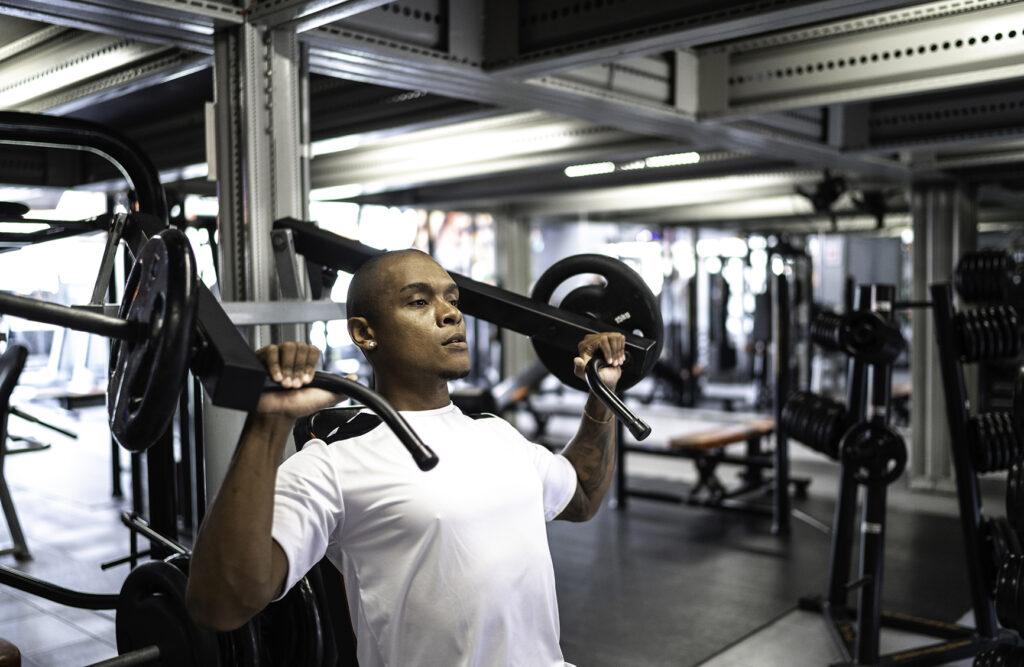
20. The independent ones
No help needed! The independent ones are happy to do their own thing when they visit your club. They prefer to workout alone. Contact with you and your team is limited to just what’s polite.
Success tips:
- Offer training programmes that the independent ones can follow online or via an app. And make use of any connected equipment you have to provide personalised digital member experience.
- Stay in touch with regular emails. Use these to ask for feedback and run surveys. That way you’ll make sure you keep on top of what these members think about your club.
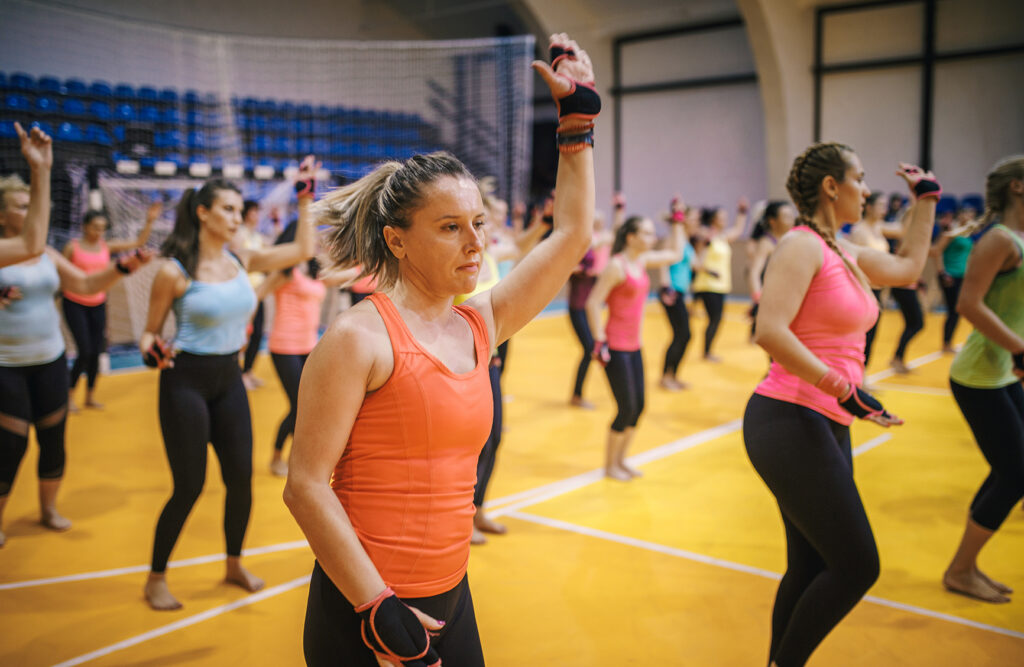
21. The group fitness fanatics
They’re always the first ones to book onto classes at your club. And likely take their favourite spot in the front row! The group fitness fanatics believe variety is the spice of life, so if you introduce a new class they’ll want to try it out.
“Group exercisers who visit your club just once per week are 20% more likely to be loyal members than those who visit 3 times per week and only workout on the gym floor.”
Les Mills
Success tips
- Recruit and retain talented fitness instructors for the classes that you offer. Ask participants for feedback regularly to understand if you have the right people leading your classes. Make sure you reward your instructors sufficiently.
- Keep your schedule fresh and experiment with new formats to see what your membership base likes. Make sure you keep those favourites in your timetable though to keep the group fitness fanatics happy!
- Run regular open days and weekends where prospective members can try out the group fitness classes you offer. This can be an effective way of attracting the group fitness fanatics to your club.
- Use your scheduling and gym booking software tools effectively. Regularly review participation to see which classes and times work best. Offer the ability to join an automated waitlist for fully booked classes. And for classes with a specific layout (e.g. group cycling), make use of book a specific spot functionality.

22. The bodybuilders
You’ll find this type of gymgoer in the weights section of your gym. Dedicated to building that muscle and sculpting their bodies to perfection, the bodybuilders mean business.
Some may be prepping to compete in a show and others will just do it for fun. One thing is certain, this type of person at the gym has clear goals.
Success tips:
- Add bodybuilding equipment, mirrors and reinforced floors, so the bodybuilders can get the most from their training sessions.
- Offer specialised training programmes and nutrition packages to those who want personalised help and support.
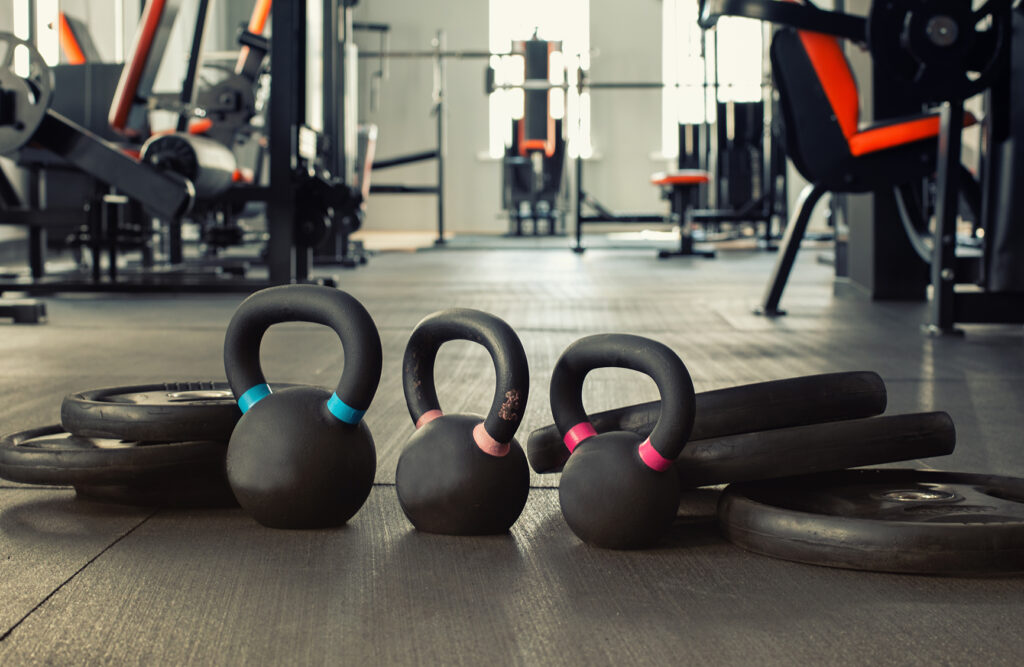
23. The messy ones
Watch your step when this type of person is in your gym!
The messy ones are those who tend to do things like leaving weights all over the place and bringing all their belongings on to the gym floor. And the truth is they probably don’t realise they’re doing it!
Success tips:
- Make sure you clearly communicate rules and etiquette guidelines that members need to follow. Incorporate these into your new gym member onboarding process. Add notices in your club.
- Try to keep calm. Kind, patient words can go a long way to helping the messy ones stick to the rules.
The wrap up…
The most successful businesses have a clearly defined target audience. This target audience should be used to guide all sorts of decisions you make when running your gym business.
Create 2-4 personas for your target audience. Then work to develop a targeted approach to attracting them. That means putting the right content in the right places to grab their attention.
Regardless of your specific target audience, there are common types of people at the gym you’ll need to attract, engage, and retain:
- The first timers
- The returners
- The regulars
- The competitive ones
- The reluctant ones
- The stress relievers
- The health seekers
- The early birds
- The night owls
- The mates
- The couples
- The families
- The ones with a little life experience
- The talkers
- The aspiring influencers
- The ‘experts’
- The tech fans
- The patients
- The athletes
- The independent ones
- The group fitness fanatics
- The bodybuilders
- The messy ones
The right gym management software partner will help cater to many types of gymgoer. A partner like Xplor Gym.
Get in touch to chat with our team and see what we can do for you.
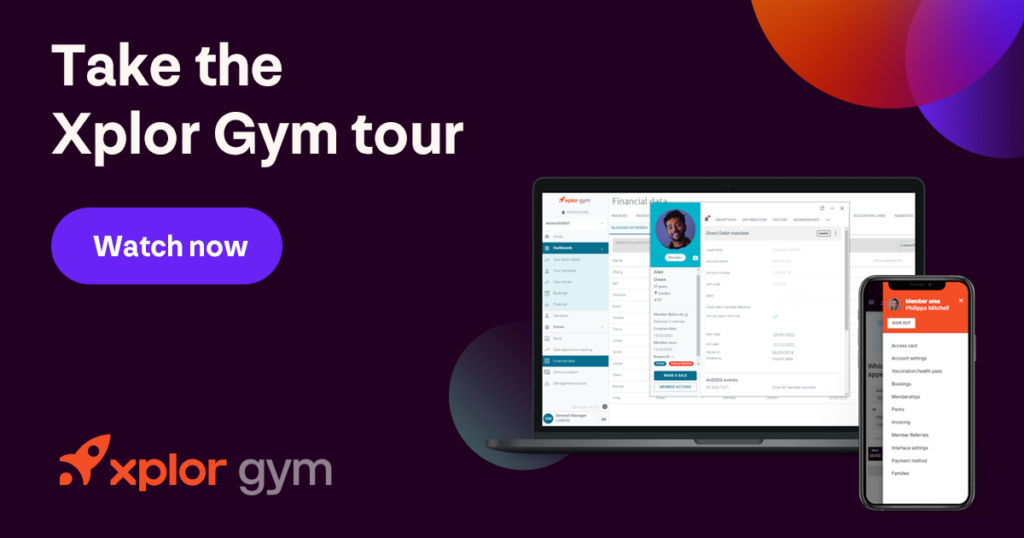

by Xplor Gym
-
First published: 29 July 2024
Written by: Xplor Gym
